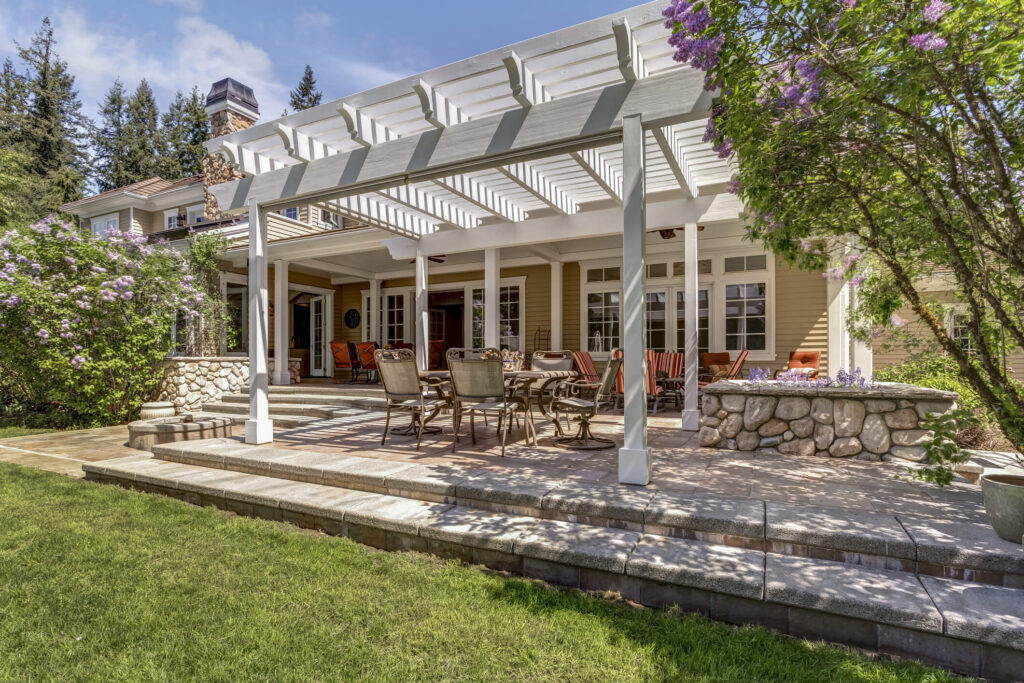Adding a pergola to your outdoor space can transform your backyard into an inviting oasis while offering protection from the Arizona sun. However, when installing a pergola in Arizona, several factors must be taken into consideration to ensure the structure is both functional and aesthetically pleasing. From climate concerns to material selection and local regulations, here’s everything you need to know before embarking on this outdoor enhancement.
Climate Considerations in Arizona
Arizona experiences a hot and dry desert climate, with intense summer heat, occasional monsoon storms, and strong winds. When planning your pergola, it is essential to consider how the structure will withstand these conditions. The Arizona sun can be extremely harsh, making shade a priority when designing your pergola. You may want to opt for additional features like a UV-resistant cover or retractable canopies. Using materials that reflect or absorb sunlight effectively, like light-colored wood or powder-coated metal, can help in keeping the temperature down under the pergola. Monsoon season in Arizona brings heavy rains and strong winds, which can impact outdoor structures. Choosing durable materials like aluminum, steel, or pressure-treated wood will help ensure your pergola stands strong against the elements. Proper anchoring is also crucial to prevent damage during storms.
Choosing the Right Materials
The material you choose for your pergola can significantly impact its durability, maintenance needs, and overall aesthetic appeal. Common materials include wood, vinyl, and metal, each with its pros and cons in Arizona’s climate. Wooden pergolas, particularly those made from cedar or redwood, are a popular choice due to their natural appearance and resistance to pests. These woods can handle Arizona’s dry climate, but they require regular maintenance, including sealing and staining, to prevent weathering and cracking. If you’re looking for a low-maintenance option, aluminum or steel pergolas can withstand the test of time. They are rust-resistant, and when coated properly, they can endure harsh weather without much upkeep. Metal pergolas also offer a sleek, modern look that can complement contemporary outdoor spaces.
Permits and Local Building Regulations
In Arizona, you’ll likely need to acquire permits before starting the installation of your pergola. Building codes may have specific requirements regarding setback distances, wind resistance, and structural integrity, which vary depending on your location within the state. Before beginning construction, we recommend contacting your local planning department to ensure you meet all zoning regulations. Some homeowner associations (HOAs) may also have rules governing the appearance and placement of outdoor structures like pergolas, so it’s crucial to check with them as well.
Customization Options for Your Pergola
A pergola is more than just an overhead structure—it can be tailored to meet your specific outdoor needs, whether you’re looking for a peaceful retreat, a stylish entertaining space, or a sun-protected area. While traditional pergolas offer partial shade, you may want to enhance this by adding features like shade cloths, retractable canopies, or even climbing plants such as bougainvillea or jasmine to create a natural canopy. These additions can help you maximize shade while creating a cooler, more comfortable environment. Select weather-resistant furniture, such as rattan or metal seating, that complements the style of your pergola. Adding throw pillows, area rugs, and potted plants can further enhance the aesthetics and comfort of the space.
Maintenance Considerations
Regardless of the material you choose, regular maintenance will ensure your pergola stays in good condition for years to come. Wooden pergolas, especially those made from natural materials like cedar, require staining or sealing every 1-2 years to prevent moisture damage and to maintain their appearance. Regularly inspect the structure for signs of splitting, warping, or insect infestations. Metal pergolas, particularly those made from aluminum, require minimal maintenance but should be cleaned periodically to remove debris and prevent buildup. Vinyl pergolas can be easily cleaned with a garden hose or pressure washer. Check for any loose screws or attachments to maintain the structural integrity of your pergola.
Cost and Installation Time
The cost of installing a pergola in Arizona can vary significantly depending on the size, material, and any customization options you select. Homeowners can expect to spend a few thousand dollars on a professionally installed pergola. Installation time can also vary, with most pergolas taking a few days to complete, depending on the complexity of the design and the availability of materials. While some pergola kits are available for DIY enthusiasts, hiring a professional ensures that the structure is safely anchored and built to withstand Arizona’s unique weather conditions. Professional installers will also be familiar with local building codes and permit requirements, saving you the hassle of navigating the process on your own.
Conclusion
A pergola can significantly enhance the beauty and usability of your outdoor space in Arizona. However, careful consideration of the local climate, the best materials for longevity, and compliance with building regulations are key to a successful installation. Whether you’re looking to create a cozy retreat or an elegant space for entertaining, a pergola adds both value and charm to your property.
At AZ Top Hardscaping, we specialize in designing and building high-quality outdoor structures that are tailored to your needs and the unique Arizona climate. Let our team of experts help you bring your outdoor vision to life with a durable, beautiful pergola that complements your home. Contact us today to get started!
















